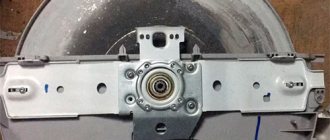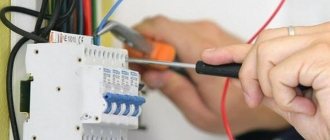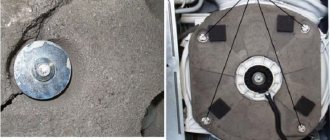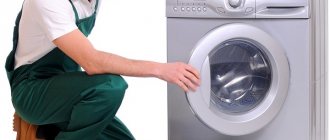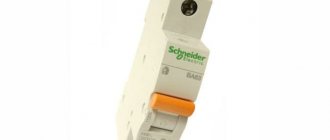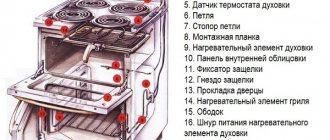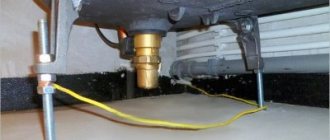The most common causes of extraneous noise
There is nothing particularly complicated in the design of a washing machine. Therefore, there are not so many places where a malfunction can nest. It all depends on at what stage of washing the unusual noise and rattling occurs. The reasons why a loud noise is heard may be as follows:
- The bearing installed in the drum drive has become unusable.
- The mounting bolts holding the tank in place during transportation were not removed.
- The drive pulley is loose.
- The counterweights holding the drum are loose or crumbled.
- Some small objects got between the drum and the wall of the tank and got stuck there.
- The drain pump is broken.
- The rubber seal located on the hatch cover has crumbled or does not fit properly.
- The washing machine is not installed level.
See also -
Why does powder remain in the washing machine tray after washing?
What level of noise is considered abnormal?
One of the signs of a malfunction is excessive noise levels. For working washing machines it ranges from 30 to 40 dB. Moreover, a large figure comes from spinning. Actually, decibel (dB) is a very tricky value that confuses people without technical education. In fact, it is a function of the decimal logarithm, in which the values of X and Y are in a nonlinear relationship. For example, a value of 10 dB corresponds to a sound level 10 times greater than absolute silence. And 20 dB is already a hundredfold excess.
To measure noise levels, you don't have to count anything. Take the TV remote control. Set the volume level to 40. The sound from a working washing machine during the spin cycle should not drown out the TV.
Bearings are damaged
This is a fairly complex breakdown that will require some skill to fix. But it’s not difficult to find it. You need to disconnect the washing machine from the network and spin the drum, pressing lightly on it. First twist clockwise, then counterclockwise. If the movement is intermittent, you hear a whistle, knocking and grinding noise - you can rest assured that the problem is in the bearings.
There is another way to detect the problem. The fact is that a leaky seal leads to bearing damage. When it is damaged, water gets in further and the bearing rusts and crumbles. You can see this by unscrewing the back panel. With such a malfunction, rusty streaks usually appear in the middle part of the tank.
If the cause is found, it must be corrected as quickly as possible.
Operating a washing machine with crushed bearings ends in damage to the bushing and shaft on which the drum sits. All this only aggravates the problem and increases the cost of repairs. See also:
A bra wire got into the washing machine
Noise Prevention
Following and observing small rules will allow you to avoid noise malfunctions of the machine. All you need is:
- do not shove too much laundry;
- do not run the wash several times in a row;
- do not frequently use the washing cycle at very high temperatures;
- do not forget to clean the filter;
- do not allow laundry to be washed with foreign objects in the pockets;
- Do not use very hard water; if this is not possible, then be sure to soften it.
Owning a washing machine means caring for it and being attentive to it. Timely diagnostics and troubleshooting mean many years of equipment operation.
Transport bolts
For more careful transportation, special fastening bolts are provided in the washing machine body. They fix the shock-absorbing springs and prevent the tank from dangling from side to side. If the fasteners are not removed after installing the unit, the drum will rotate with a loud knock. What to do?
The problem can be solved very simply. You just need to unscrew the mounting bolts. The noise will stop. They are located in the back wall of the machine. By the way, this is written in great detail in each installation and operating instructions.
Acceptable noise limits
Each washing machine comes with an instruction manual that contains information about the noise level.
The rate may vary and depends on the technology and drive option:
- belt varies from 60 to 72 dB;
- direct from 52 to 70 dB.
The level of these decibels is not silent, but also does not cause discomfort to users. How can you tell if the machine is making such a loud noise?
Accurate measurement is possible using a sound level meter . There are Chinese models that are quite inexpensive. But it is not always possible to purchase this equipment. What should I do?
There are many associations with strength in DB. For example, a sound of 50 dB is typical of a typewriter, and at 95 dB a train in the subway is heard. The jackhammer operates with a noise level of 120 dB. You can focus on these indicators. If you feel that the washing machine is humming a lot and making some strange noise, then you should find the reasons and fix the problem.
It is important to understand at what point unpleasant sounds occur - during washing, spinning, rinsing or draining.
The pulley is loose
When the washing machine hums, makes noise and clicks loudly when the drum rotates, the problem may be that the drive pulley is weakening.
This is easy to check. Turn on the machine in test mode. If this is not the case, a hand wash mode or any other mode in which the drum rotates slowly will do. Listen carefully to the sound while looking at the drum. If every time you turn it you hear an extraneous noise, or rather a clicking sound, the pulley is most likely to blame. It's easy to fix the situation. Remove the back panel and locate the mounting nut that holds the pulley in position. Using a wrench of the appropriate size, eliminate the play by tightening the nut until it stops. If the noise during rotation disappears, then you did everything right. If not, we continue searching.
Possible reasons why the washing machine makes a lot of noise when spinning
The probable reasons why your existing washing machine begins to make a lot of noise when switching to spin mode are:
- Underload, overload, imbalance of loaded and dried laundry;
- Incorrect placement of the washing machine itself in the room;
- Preservation of transport fasteners (bolts);
- A foreign object has entered the device tank;
- Bearing wear on the drum shaft;
- Malfunction of shock-absorbing springs or shock absorbers;
- Malfunction of the electric motor or wear of its brushes;
- Faulty or clogged drain pump.
As you can see, the reasons for the increased noise level during diagnosis can be very different. And only in some cases can they be corrected on their own.
Counterweights
These rather heavy elements of the washing machine hold the unit's tank in place during the spin cycle. They are designed to dampen centrifugal force and counteract the rocking of the washing machine. If you hear a loud noise or rather a rattling noise when spinning the drum, check the counterweights. They are made of concrete, and it tends to deteriorate from old age.
Unscrew the back panel of the washing machine and carefully inspect the counterweights, shake them.
If the fasteners are loose, they need to be tightened by tightening the corresponding bolts tightly. If you find cracks on any of the counterweights, it is better to replace it completely. If this is not done, strong vibration may cause the counterweight to crack and damage the insides of the unit. Then you will have to repair a lot more. See also -
Shock absorbers for washing machines: do-it-yourself repair and replacement
Precautionary measures
In order for the machine to work for a long time, you must adhere to certain rules.
- You need to be vigilant and carefully inspect things for small parts that may come off during washing and get into the tank. It is better to put such things in a special laundry bag.
- Remove money and other small items from your pockets that could damage the machine during the washing process.
- Protect the heating element from scale that forms from hard running water. To do this, you need to use water softening and descaling products.
- It is necessary to move the washing machine at least once every six months and check the serviceability of the hoses, as well as flexible wiring and pipes for damage.
- Wash and clean the drawer for powder and rinse aid. If this is not done, hardened powder particles may accumulate in the machine, which will interfere with the normal operation of the equipment.
- After each wash, leave the powder container and the machine door open. This is necessary so that the internal parts of the washer dry thoroughly.
All these recommendations will help extend the life of the washing machine and protect it from frequent breakdowns and calls to service centers.
Some types of repairs can be carried out independently, but still, if the breakdown is serious, it is best to contact a service center and call a specialist to your home.
Garbage and foreign objects
If you hear an unusual ringing, noise or grinding sound during washing or spinning, the reason may be that some foreign object has entered the tank. This often happens when housewives do not check their pockets very carefully. Such items can be nuts, coins, paper clips, bra underwires, metal buttons, and so on. What to do? How to eliminate extraneous noise?
We'll have to tinker. In order to look into the tank, you need to get to the heating element and unscrew it. Through the resulting hole, using long tweezers or just your fingers (if possible), remove objects that make an extraneous sound. Now you need to put the heating element in place, not forgetting to clean and degrease the rubber seal. It can be lubricated, for example, with liquid detergent.
Sometimes the problem can be solved much easier. Some models of “washing machines” have a special sump in which a filter is installed. In this case, you just need to open the sump door. It is most often located in the front. Now we just take out the filter and shake out everything that gets into it.
Hatch cuff defect
Some may find it strange that the cuff of a washing machine can become a source of suspicious noises, but nevertheless, it is so. The purpose of the cuff is to prevent water from pouring into the gap between the body and the hatch during operation. If the cuff is installed correctly and the material from which it is made has not lost its elasticity, a small gap remains between it and the rotating parts. The cuff is not in contact with the drum. If it is distorted, the situation changes. The edges of the cuff go inward, preventing the normal rotation of the drum, thereby causing noise.
It is worth noting that such a malfunction, which creates an unpleasant noise, is more often found in inexpensive devices from little-known manufacturers; washing machines from LG, Samsung, Indezit and other world brands are free from this drawback.
If abrasions are visible on the cuff, this is the reason. You can correct the situation in the following way:
- open the hatch, turn the drum by hand;
- determine the part that clings to the cuff;
- stick a piece of fine sandpaper on the drum;
- run the washing machine in spin mode.
As the drum rotates, the sandpaper will remove excess rubber and friction should stop. Of course, this method will only work if the size of the protruding edge of the cuff does not exceed a few millimeters. Otherwise, the cuff will have to be replaced.
If the cuff is in order and the noise does not stop, you need to move on to checking other parts of the washing machine. Further actions involve disassembling the machine, completely or partially. Before getting down to business, you need to soberly assess your capabilities, and in case of the slightest doubt, contact specialists.
Faulty pump
Sometimes, when the washer hums and makes noise while draining water, the reason may be that the drain pump is damaged. You can try to correct the situation by cleaning the strainer. It is located on the front side of the unit, behind a special cover.
You also need to make sure that the drain pipe is clean. This is another reason why the machine began to make noise. Clean the pipe, it is likely that the noise will disappear.
If nothing helps and the unit still hums and rattles, things are bad. The drain pump has completely failed and will have to be replaced. To avoid mistakes, listen carefully to the operation of the unit. You can “suspect” the pump only if the “washing machine” makes noise only when filling or draining water, and the rest of the time it works quietly. The sound will be very similar to the noise of a running transformer.
Drum pulley is very weak
If even in free-running mode the drum begins to rotate, and during stable operation the machine makes a lot of noise, this may indicate that the drum pulley is very weakened.
This does not mean that the machine is being used incorrectly. The pulley fails for obvious reasons - the washing machine has been in use for a long time.
The problem could be a loose screw or nut. Once you have found a loose screw or nut, you need to tighten it and then use sealant for maximum effect.
Rubber compressor
It happens that during operation, and especially during spinning, the washing machine whistles.
In this case, you find rubber shavings on the cover or walls of the hatch. Most likely it's the seal. This most often happens with inexpensive models of washing machines. Of course, it is best to replace the seal and choose a new one that fits in size. But you can try to solve the problem with the help of advice from folk craftsmen. Take a small piece of sandpaper and insert it between the front wall and the rubber seal. Now run any wash cycle that is at least half an hour long. There is no need to put laundry down. Sandpaper will help you adjust the elastic to size. All you have to do is take it out and remove the rubber debris from the machine. To do this, run an additional rinse cycle and then clean all filters.
DIY machine repair
To repair a machine yourself, you need to know its structure and operating principle. As a rule, repairs involve replacing old parts with new ones. When troubleshooting, you must first disconnect the machine from the power supply.
To replace parts yourself, you need to have a standard set of tools, and to repair the control board or electronics, you may also need a soldering iron.
Cleaning the drain filter
The first thing a washing machine owner can do is clean the filter. It often happens that small items of clothing or threads get there, which subsequently prevent the water from draining from the washing machine. To do this, you need to open the small cover located at the bottom of the machine and unscrew the small plastic plug using pliers.
After this, you need to clean the filter and rinse it under running water.
Cleaning the fill filter
This filter is located in the water intake hole. It can become clogged with small particles of dust or sand. To do this, you need to unscrew the inlet hose and use pliers to pull out the filter - a small plastic mesh that needs to be rinsed under water.
Replacing the heating element
If the repair involves replacing the heating element, you must first remove the back cover of the machine. Then disconnect the terminals and use a multimeter to check the element for functionality. The faulty heating element must be unscrewed using a wrench. After the old heating element is removed, you need to replace it with a new one. Be sure to install all parts in the correct order.
These are the most common types of repairs that you can easily carry out yourself. For more serious damage, it is better to contact a specialist.
Incorrect installation of the washing machine
Sometimes the answer to the question why a home laundry machine rattles and rattles during washing, especially during the spin cycle, is that it is simply not installed correctly. We are not talking about the electrical part here, but simply about its physical location. If the unit is not installed level, then when rotating at high speeds, for example, during a spin cycle, the centrifugal force will unbalance it. This leads to the following consequences:
- strong vibration is observed;
- the body of the car sways or “jumps”, moving from its place;
- A strong knocking and beating of the drum is heard.
To correct the situation, nothing needs to be repaired. All you need to do is set the washing machine level by tightening the legs. The sound should disappear.
If, after checking all the reasons described above, you still have not found the reason why the washing machine makes unusual sounds, the problem may be in the electric motor or the “wired” part of the unit. You can’t do this without special skills. It's best to call a professional. Using a multimeter, he will carefully “ring” all suspicious places and determine the cause of the hazing sounds.
Eliminating the causes of noise during operation
Depending on what factors led to the hum, whistle and other sounds during the spin cycle, certain actions should be taken. In addition to the reasons that are characteristic of all ACM models, there are those that depend on the design features of individual brands of machines: LG, Ariston, Electrolux and other brands.
Transport bolts
One of the most common situations that can lead to serious damage to the machine. Often, craftsmen installing a new SM, in a hurry, forget to remove the bolts designed to secure the drum during transportation.
Before installing the washing machine, you need to unscrew the transport bolts
If the washing machine makes strange sounds when spinning during the first wash, knocking and other specific sounds are heard, you should immediately check whether the bolts have been removed from the body.
Foreign object in tank
Very often, when loading laundry into the drum, owners do not check the contents of their pockets. And there may be coins, pins and other small objects that can fall from the drum into the tank.
Seal lip with a foreign object stuck in it
When the drum shakes and rotates at low speed during washing, small objects do not make themselves felt. As soon as the spin cycle begins and the vibration increases, objects begin to move, falling into the gap between the tank and the drum. As a result, the washing machine rattles during the spin cycle, whistles, hisses and rumbles.
Location of the heating element in the washing machine
You can solve this problem yourself. To remove a foreign object, turn off the power to the AFM, remove the back cover and release the heating element by removing the fasteners. Its most common location is under the tank, near the electric motor. After this, carefully remove the foreign object from the resulting niche using your fingers or a handy tool, for example, long pliers or a medical clamp.
This video describes how to remove foreign objects from the tank:
Bearings are worn out
In most cases, the drum rotates inside the washing machine tub on two bearings. These parts are subject to wear, especially due to vibration caused by the large amount of laundry in the drum. Another reason for their destruction is the ingress of water and detergents through a leaky oil seal.
Worn drum bearing with water ingress
If the washing machine hums during the spin cycle, it is worth checking the condition of the drum ball bearings. To do this, you need to turn off the power to the SM, open the hatch, put your hand into the drum and turn it in one direction, and then in the other. If the bearings are in good condition, a slight rustling noise will be heard when rotating. A cracking, knocking or slight hum will indicate damage to parts.
Replacing bearings and oil seals is a difficult and troublesome task. We'll have to disassemble the AFM completely. If the tank is plastic and cannot be disassembled, you will need to completely replace the expensive unit. True, there are craftsmen who cut the tank and replace parts themselves. Then the tank is glued together and the SM is successfully used further. But if you do not have the experience and necessary skills in handling tools, it is better to entrust the replacement to a qualified craftsman.
This video provides information on how to replace bearings in a non-separable plastic tank ASM Ariston:
Loose pulley or belt
If the washing machine makes noise during the spin cycle and clicks are heard, you should pay attention to the drum pulley and drive belt. As a rule, such a defect appears after prolonged use. During this time, the belt can stretch, shift and slip in the pulley. If the pulley mounting nut is loose, it can rotate relative to the drum.
Washing machine drive belt and drum pulley
You can diagnose such malfunctions by running a test mode or hand wash (the drum should rotate slowly). If extraneous sounds do not disappear, you should remove the back cover and inspect the parts. First of all, tighten the pulley mounting nut - it is quite possible that it has become loose. For more reliable fixation, you can apply sealant to the nut. Check the belt tension and adjust it if necessary. If after these steps the noise level does not return to normal, replace the belt.
Counterweights are shifted
The tank is attached to the SM body with springs to minimize vibrations during spinning. For the same purpose, counterweights located around the tank are used. In most ACM models they are attached to the tank with screws.
Top counterweight with mounting screws
Under heavy loads and after prolonged use, the fastenings of the counterweights may become loose. In this case, the parts change position, shifting the center of gravity of the tank. As a result, the washing machine makes noise when spinning, and also vibrates strongly, rumbles and even bounces. This problem can be eliminated by tightening the fastening nuts or screws securing the concrete blocks until they stop. In order to get to the counterweights, you will have to remove the top and back covers.
Incorrect installation
Carelessness when placing and leveling the SM on the floor can lead to its imbalance during operation. If the unit is not installed level and all legs do not rest properly on the floor surface, during spinning there will be a rumble, rattling and displacement of the ASM relative to its place.
When installing, the washing machine must be level
It’s easy to check that the installation is correct: just place a level on the top cover. If it is misaligned, you will have to level the machine by adjusting the height of the legs.
As you can see, you can independently eliminate the reasons that the washing machine is noisy during the spin cycle. The only exception is bearing wear. But if you have plumbing skills and experience in handling tools, such a problem can also be fixed on your own.
Prevention
In order to invite a technician into your home as little as possible, it is enough to follow simple rules for operating the washing unit. This will not only extend its service life, but also save you from unnecessary hassle. What are these rules?
- Do not overload the machine. It is better to put a little less laundry in it than required according to the instructions.
- Try to do laundry no more than once a day. This will avoid additional stress on the parts. The washing machine will have time to cool down and dry thoroughly.
- Clean all possible filters regularly. You can also install additional water purifiers if necessary.
- Clean your machine from limescale deposits more often. Use special tools for this and follow the instructions.
- If possible, run the boiling program and spin mode at maximum speed as often as possible. If you do this often, components and parts will fail much faster.
- Before putting things in the machine, do not forget to carefully inspect the pockets and folds. Keep buttons and zippers fastened, and use a special bag for washing bras. All these precautions will save you from “fishing out” small objects from the bottom of the drum.
And remember: you shouldn’t delay the repair of the “home laundry”. If you ignore the problem at the initial stage, the matter may worsen and then the repair will cost much more.
See also:
- 10 Best Top Loading Washing Machines
- 10 best Hotpoint-Ariston washing machines according to customer reviews
- 10 best Electrolux washing machines according to customer reviews
- 10 best ATLANT washing machines according to customer reviews
- 10 best built-in washing machines
Cases when the washing machine makes noise during the spin cycle due to improper use or installation
Before you grab a screwdriver or call a service technician, you should pay attention to the nature of the noise. If the washing machine makes uneven knocks, clicks, as if something is falling in it, hums faintly in between, and it is clear that it does not pick up the standard speed - most likely this indicates underload or overload.
The washing machine is designed to work with a certain amount of laundry. In spin mode, it tries to distribute it evenly inside the drum so that when accelerating to 1000 rpm there is no imbalance or distortion. If there are too few things in it, or there is one, but it’s heavy (like sneakers), it’s impossible to place them. The same thing happens if too many things are loaded.
This problem, of course, can be solved on your own. It is necessary to either add things (if there are too few of them) or take out the extra ones (if there are too many). But it is generally not recommended to spin sneakers and other shoes in a “washing machine” or any kind of centrifuge.
If, when drying wet clothes, the “washing machine” begins to hum and vibrate strongly, or even “jump,” this primarily indicates an incorrect installation. Check:
- No distortions
. If it turns out that the “washing machine” is tilted in any direction, level it;
- No contact with walls
. The “washing machine” should be at a distance of 2 cm from the nearest obstacle;
- Floor stability
. If the floorboards under the unit are wobbly, then it is worth rearranging the device. Or strengthen the floor.
- If the washing machine is noisy when first started, then you need to immediately interrupt the established cycle and check that all transport bolts are unscrewed
. Leaving clips inside the unit may damage the drum. And, of course, they will cause loud noise, sharp “jumps” of the “washing machine” itself and an increased level of vibration.
These causes of increased noise during spinning can be corrected yourself. But in all other cases, the intervention of a service specialist will be required.
Loose Counterweight
The counterweight is a very simple device in the washing machine that can be the cause of the noise. Actually, this is a piece of concrete installed inside the washing machine. Its task is to dampen the inertia that arises during the rotation of the drum. Despite its apparent simplicity, it can become loose and, instead of calming the vibration of the car, bother its owner with creaks and noise.
The counterweight is easy to access - you just need to remove the top cover. Often, during operation, the mounting holes break, and the concrete block begins to “walk”, making a loud noise. If the counterweight moves freely, but the bolts cannot hold it because the holes are larger than the bolt heads, the counterweight will have to be replaced.
Weakened counterweights
By analogy with the previous problem, the issue of weakened counterweights is also solved. You must open access to the bolts and tighten them, after which the extraneous noise from the washing machine should disappear.
There may be another type of failure associated with counterweights - their complete destruction. In this case, the sound will be much louder and broken parts will have to be replaced.
How to tighten the counterweight fastenings is described in the video lessons:
Tightening the Upper Counterweight
Tightening the lower counterweight
